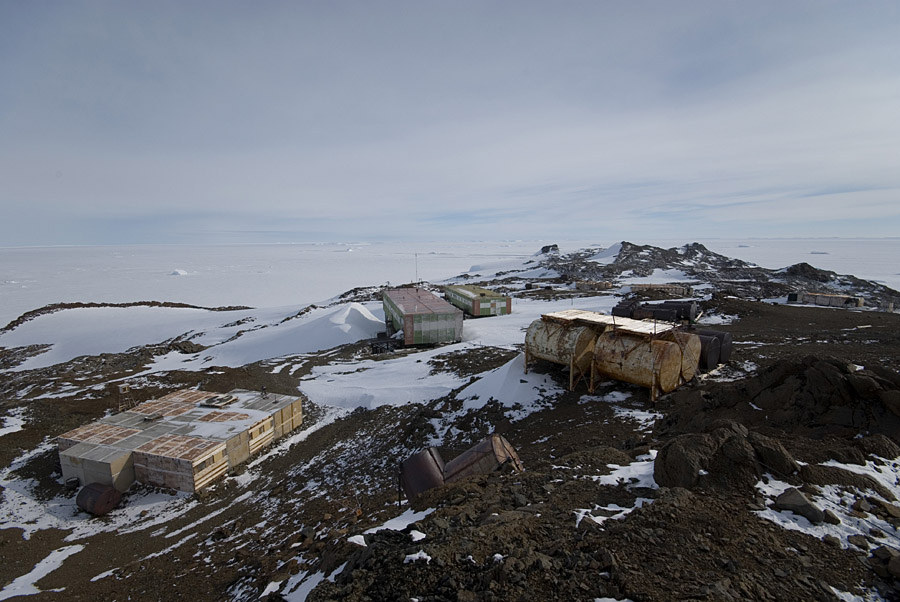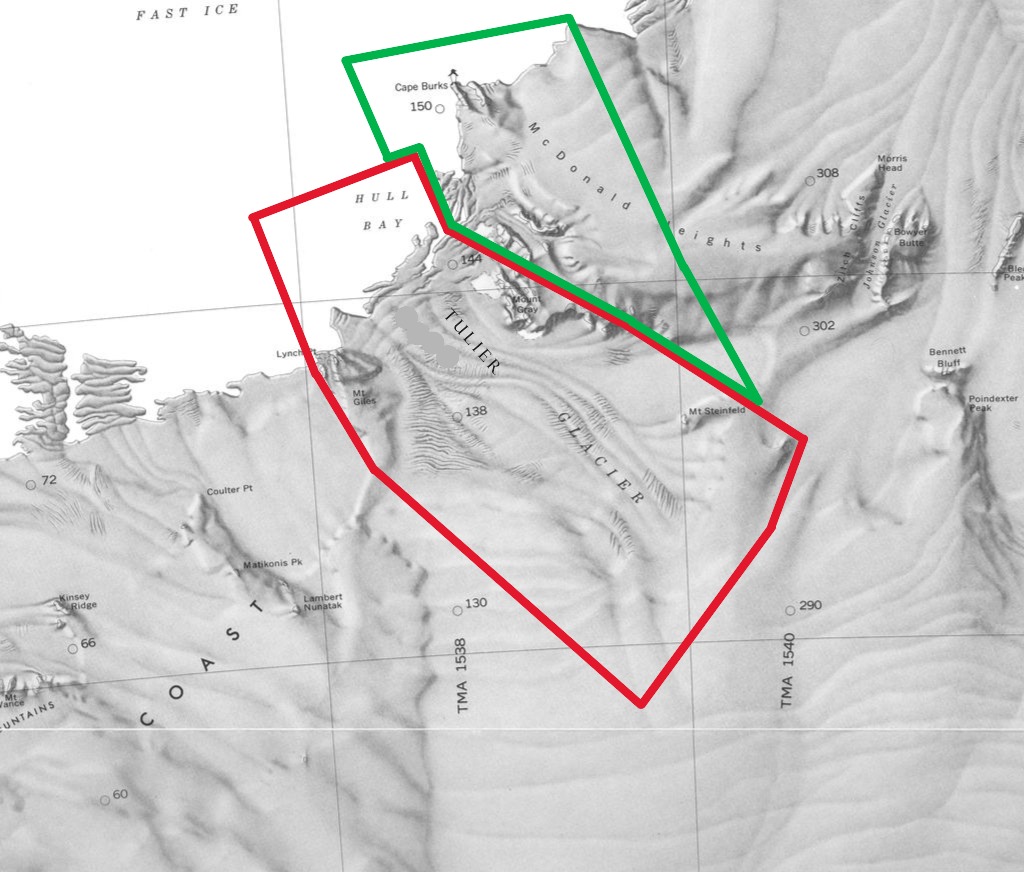Cape Burks National Monument
Cape Burks National Monument (74°75′S 136°83′W) is a protected area of Westarctica created to preserve Cape Burks on the Hobbs Coast. It was created via Royal Decree on 8 August 2025 by Grand Duke Travis. It falls under the oversight of the Westarctican Parks Service.
History
The cape was sighted and mapped from the USS Glacier, 31 January 1962.
Russkaya Station was established on Cape Burks by the Soviet Union in 1980 and later mothballed in 1991 after the fall of communism, being closed in such a way that it could be re-opened with minimal effort.
In February 2006, Valeriy Lukin, the head of the Russian Antarctic Expedition (RAE), stated: "There are plans to open the mothballed stations Molodyozhnaya, Leningradskaya, and Russkaya in the 2007–2008 season." However, by 2012 it was reported that reactivation plans, although delayed, had not commenced.
In 2015, Grand Duke Travis was contacted by a television production company about developing a reality television show that would take place in Westarctica. The show was to be funded by a television network and would deal with the pressures of trying to start a country with family and friends while confined to a relatively limited location. Russkaya was deemed to be a perfect fit for the production.
Grand Duke Travis reached out to Valeriy Lukin, the head of the Russian Antarctic Expedition, and successfully secured permission from the Russian government to utilize the abandoned station for the duration of filming, which was expected to last the entire month of February (2016). However, after several months of pitch sessions, network funding for the production fell through and the expedition was canceled.
On 8 August 2025, Grand Duke Travis declared the cape a national monument under the oversight of the Westarctican Parks Service. Cape Burks National Monument has been identified as a leading candidate for elevation to the status of national park, possibly via a merger with Tulier Glacier Conservation Area.
Conservans Protectorem
Those nobles whose titles were named for features within the memorial when it was established were afforded the additional honorific Conservans Protectorem to use in conjunction with said title. Cape Burks National Monument conferred this honorific on only one Peer: the Duke of Hobbs.
Conservation
Cape Burks National Monument's roughly 150,224 acres (607.9 square kilometers) is protected under category IV (habitat or species management area) of the International Union for Conservation of Nature. These protections mean that conservation efforts are primarily aimed at the preservation of the wildlife and the habitat that supports them. The preservation and potential future use of Russkaya station, as well as its ecological impacts on the area are also a significant driver of efforts for this monument.
Features
Cape Burks is the site of a colony of Adélie penguins that is significant to the species’ continued survival in Westarctica, possibly the largest on the Westarctican mainland. This area also contains the mothballed Cold War-era Russkaya research station, which was operated by the Soviet Union and whose activites within Westarctica incur additional Russian diplomatic concerns.
Key locations
- Cape Burks (74°75′S 136°83′W) is a prominent exposed-rock cape on the northwestern seaward extension of McDonald Heights, marking the east side of the entrance of Hull Bay on the coast of Westarctica, and was named for Lieutenant Commander Ernest Burks, U.S. Navy, senior helicopter pilot on the Glacier and the first person to set foot on the cape.
- McDonald Heights (74°55′S 136°0′W) are broad, mainly snow-covered heights about 35 nautical miles (65 km) long and rising over 1,000 meters (3,300 ft) between Cape Burks and Morris Head on the coast of Westarctica. The heights were named by the Advisory Committee on Antarctic Names after Captain Edwin A. McDonald, U.S. Navy, Deputy Commander of the U.S. Naval Support Force, Antarctica, in 1962, and Commander of the Task Unit that explored this coast in the Glacier in February 1962. Only the northwestern portion of the heights fall within the national monument.
- Russkaya Station (74°46′00″S 136°48′10″W) is a former Soviet and Russian Antarctic research station that was located on the Ruppert Coast, in Westarctica. The station was proposed in 1973 and approved in 1978. Construction began the next year and it was opened on 9 March 1980 and officially abandoned after the fall of the Soviet Union in 1990.

